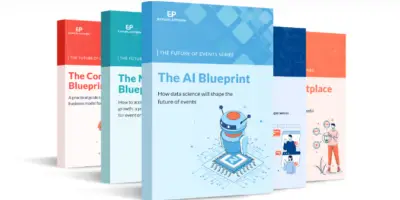I’ve been fascinated by artificial intelligence (AI) for as long as I can remember. I remember being amazed by the early AI chatbots, like ELIZA and PARRY. These chatbots were able to hold simple conversations with humans, and they seemed like a glimpse into the future of AI.
As AI has evolved, so has my understanding of it. I’ve learned that AI is not just about creating chatbots that can talk to humans. AI like ChatGPT helps in creating tools that can help us solve complex problems.
One of the most powerful tools in the AI toolkit is prompt engineering. Prompt engineering is the art of communicating with AI in a way that elicits the desired response. It’s a way of telling AI what you want it to do, without having to explicitly program it.
The Impact Of Prompt Engineering

Prompt engineering is a relatively new field, but it’s already having a big impact on the way we use AI.
For example, prompt engineering is being used to create AI-powered writing assistants, like Grammarly and ProWritingAid.
These tools use prompt engineering to help writers improve their grammar, style, and clarity.
Prompt engineering is also being used to create AI-powered chatbots that can answer customer questions, provide customer support, and even sell products.
These chatbots use prompt engineering to understand the customer’s needs and to provide the most relevant and helpful response.
I’ve been using prompt engineering for a few years now, and I’ve found it to be a powerful tool. It’s helped me to create AI-powered tools that have helped me to solve complex problems.
In this blog post, I’ll share some of my experiences with prompt engineering. I’ll also share some tips for how you can use prompt engineering to create your own AI-powered tools.
What is Prompt Engineering?
Prompt engineering is the art of communicating with AI in a way that elicits the desired response.
Prompt is a way of telling AI what you want it to do, without having to explicitly program it.
Prompt engineering can be used to create AI-powered tools that can do a variety of things, including:
- Generate text
- Translate languages
- Write different kinds of creative content
- Answer questions
- Solve problems
The key to prompt engineering is to understand how AI works. AI models are trained on large datasets of text and code.
When you provide an AI model with a prompt, it uses its training data to generate a response.
The better your prompt, the better the response will be. A good prompt will be clear, concise, and relevant to the task at hand. It will also be consistent with the training data that the AI model was trained on.
Prompt Engineer

A Prompt Engineer is a professional who creates, improves, and optimizes AI-generated text prompts to make sure they are accurate, interesting, and useful for different uses. They also work with other teams to improve the prompt generation process and the general performance of the AI system.
How Much Do Prompt Engineers Make?
AI Prompt Engineer is the hottest tech job right now. A person can make up to $535,000 per year, and they don’t even need a degree in computer engineering or advanced writing skills to do it.
Types Of Prompts
There are three main types of prompts:
- Instructional prompts tell the AI model what to do. For example, an instructional prompt might be “Write a poem about love that is both beautiful and heartbreaking.”
- Generative prompts provide the AI model with a starting point and allow it to generate its own content. For example, a generative prompt might be “Write a story about a robot who falls in love with a human.”
- Evaluative prompts ask the AI model to evaluate or judge something. For example, an evaluative prompt might be “Is this poem beautiful or heartbreaking?”
The type of prompt you use will depend on what you want the AI model to do.
For example, if you want the AI model to generate a poem, you would use a generative prompt. If you want the AI model to evaluate a poem, you would use an evaluative prompt.
Here are some examples of each type of prompt:
- Instructional prompts:
- Write a poem about love that is both beautiful and heartbreaking.
- Translate this sentence from English to French: “I love you.”
- Answer this question: What is the capital of France?
- Generative prompts:
- Start with the sentence “The robot looked at the human with longing eyes.” and write a story about their relationship.
- Generate a list of 10 things that are both beautiful and heartbreaking.
- Write a poem about a lost love.
- Evaluative prompts:
- Is this poem beautiful or heartbreaking?
- Is this translation accurate?
- Is this answer correct?
How To Create Effective AI Prompts
There are a few key principles that can help you create effective prompts. These principles include:
- Clarity: The prompt should be clear and easy for the AI model to understand.
- Specificity: The prompt should be specific enough to elicit the desired response.
- Context: The prompt should take into account the context of the conversation.
- Creativity: The prompt should be creative and open-ended.
Personal Insight
I’ve been using prompt engineering for a few months now, and I’ve found it to be a great way to get AI models to generate creative and informative content.
For example, I recently used prompt engineering to get an AI model to generate a blog post about the future of AI. The post was well-written and informative, and it even included some original insights.
I was really impressed with the results, and I’m excited to see what I can do with prompt engineering in the future
Best Practices For Creating Effective AI Prompts
Here are some best practices for creating effective prompts:
- Use natural language: The prompt should be written in natural language, as opposed to code or mathematical notation. This will make it easier for the AI model to understand.
- Use keywords: The prompt should include keywords that are relevant to the desired response. This will help the AI model to focus on the right information.
- Use examples: If possible, the prompt should include examples of the desired response. This will give the AI model a better understanding of what you’re looking for.
- Be patient: It may take some trial and error to get the prompt right. Don’t be discouraged if you don’t get the results you want the first time.
Conclusion
Prompt engineering is a powerful tool that can be used to communicate with AI models. By following the principles and best practices in this blog post, you can create effective prompts that will help you get the most out of AI models.
I hope you enjoyed this blog post! If you have any questions or comments, please feel free to leave them below.
Discover more from Digital Wealth Guru
Subscribe to get the latest posts sent to your email.








Comments